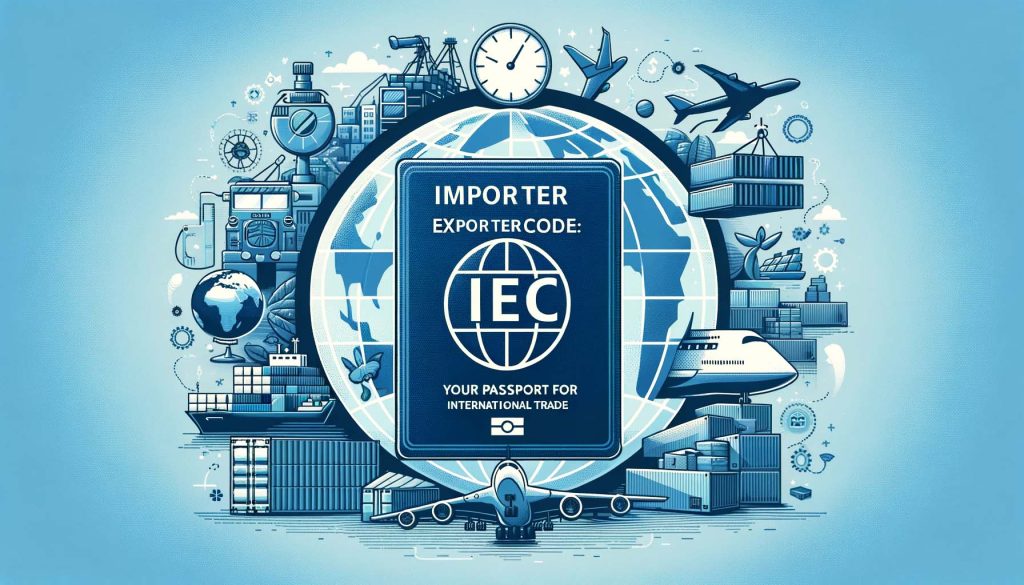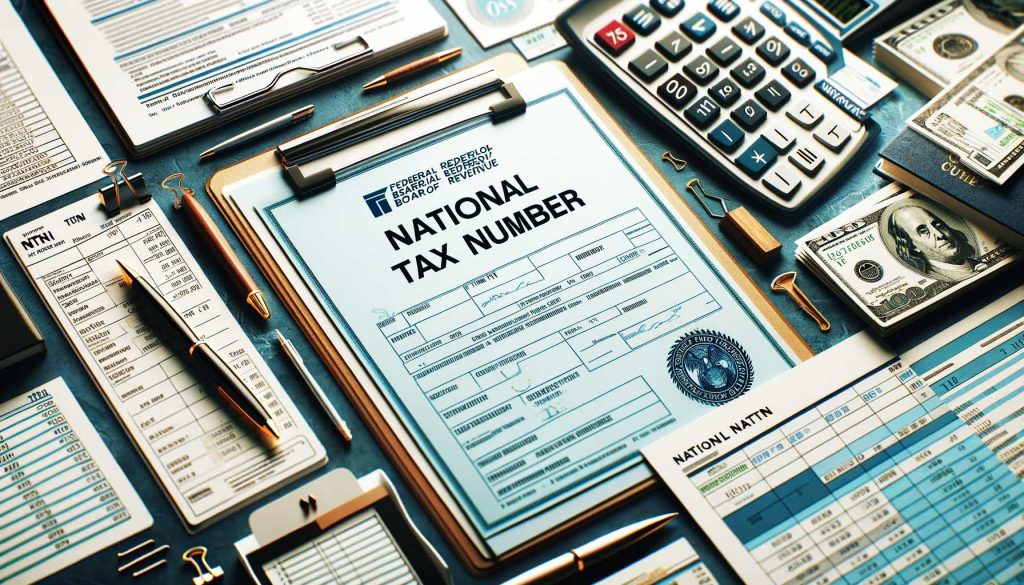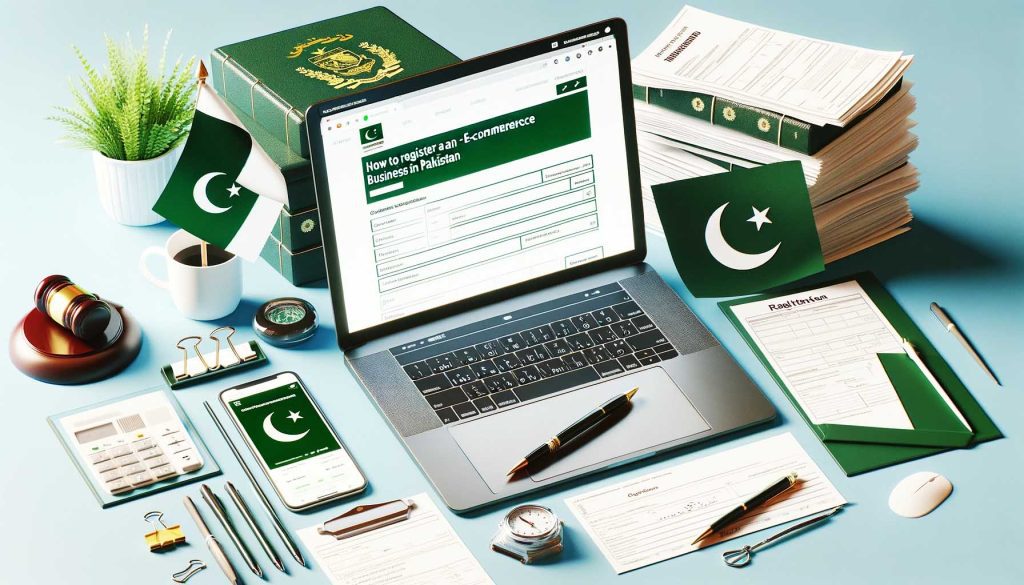The world of international trade can be both exciting and lucrative. If you’re considering venturing into this realm, you’ll quickly encounter the term “Importer Exporter Code” or IEC. In this article, we’ll provide a comprehensive guide to IEC registration, explaining the process, the required documents, its advantages, and much more.
In the world of international trade, having an Importer Exporter Code (IEC) is like having the key to unlock opportunities, just like how registering your e-commerce business in Pakistan opens doors to the digital marketplace.
Obtaining an Importer Exporter Code (IEC) is as essential for international trade as setting up a professional WordPress website is for establishing your online presence.
- What is Importer Exporter Code (IEC)?
- WeBoc: Web-Based One Customs
- Types of Registration
- Step 1: Eligibility Assessment
- Step 2: Gathering the Essential Documentation
- Step 3: Submission of Application
- Step 4: Personal Appearance and Verification
- Step 5: Acceptance or Rejection
- Step 6: User-ID Creation
- Step 7: Login-ID and Password Issuance
- Revalidation of WeBOC Registration
- WeBOC: Simplifying Customs Procedures
- A Final Word
What is Importer Exporter Code (IEC)?
Let’s start with the basics. The Importer Exporter Code (IEC) is a 10-digit unique number issued by the Trade Development Authority of Pakistan (TDAP) a government body responsible for promoting foreign trade in Pakistan. This code is your passport to international trade, allowing you to engage in import and export activities legally.
WeBoc: Web-Based One Customs
WEBOC stands for “Web-Based One Customs,” and it is an online customs clearance system used in Pakistan. This system was developed jointly by the Pakistan Customs and PRAL (Pakistan Revenue Automation Ltd.) to streamline and automate the customs clearance process for import and export goods.
WEBOC is designed to facilitate trade and reduce paperwork and manual processes. It provides a digital platform for various customs-related activities, such as filing goods declarations, managing customs documentation, and processing payments. The system is used by businesses, government departments, and customs authorities to ensure the efficient and transparent movement of goods across Pakistan’s borders.
Key features of WEBOC include paperless online processes, risk management systems to categorize consignments into green (low risk), yellow (document verification), and red (high risk) channels, and online communication between customs officials, traders, and clearing agents. It has significantly reduced the need for physical visits to customs offices and has improved the speed and accuracy of customs clearance.
In summary, WEBOC is a digital platform that plays a crucial role in simplifying and expediting customs procedures for import and export in Pakistan, benefiting both businesses and the government by promoting efficiency and transparency in international trade.
Registering for Customs: A Step-By-Step Guide
In the world of international trade, one of the fundamental requirements for businesses and individuals looking to engage in import and export activities is the need to register with the customs authorities. In Pakistan, this registration process is facilitated through the online Customs portal known as “WeBOC” (Web-Based One Customs). To assist you in understanding the comprehensive process, we’ve outlined the steps, requirements, and the various types of registrations available, with a focus on ensuring clarity and ease of comprehension.
Types of Registration
WeBOC offers various types of registration or WeBOC User IDs based on eligibility criteria:
- Trader: This category encompasses various types of businesses, including manufacturers, commercial importers, commercial exporters, non-commercial entities, ship-breakers, trusts, non-profit organizations, diplomatic cargo (embassies), government departments, and courier services.
- Customs Agent: Registration for individuals or entities involved in customs brokerage.
- Bank Users: For banks engaged in customs-related transactions.
- Bonded Carriers: Registration for businesses involved in bonded transportation.
- Shipping Lines: Registration for companies in the shipping industry.
- Warehouse: For entities operating warehouses.
Step 1: Eligibility Assessment
Before diving into the registration process, it’s essential to ascertain your eligibility. WeBOC registration is open to a variety of entities, including traders, customs agents, banks, bonded carriers, shipping lines, and warehouses, among others. Ensuring you fall into one of these categories is the first step.
Step 2: Gathering the Essential Documentation
Registering for WeBOC requires the submission of specific documents, which vary depending on the type of registration you seek. Here’s a detailed breakdown of the documents necessary for different categories:
Registration as a Trader
- These documents are essential for the registration process as a Trader, ensuring compliance and legitimacy in your import and export activities.
- Certainly, here are the document requirements for Registration as a Trader presented in a bullet-point format:
- Proprietor’s Original CNIC (Computerized National Identity Card)
- A formal request for the issuance of a WeBOC User-ID on the company’s letterhead
- Passport-sized photographs (2)
- WeBOC External User Registration Form
- NADRA (National Database and Registration Authority) Verification
- National Tax Number (NTN) Certificate
- Sales Tax Registration Certificate or IRIS-14(I)
- IRIS-181 (Order to Grant/Refuse Modification to Registration on Application)
- IRIS-114 (Return of Income Filed voluntarily for a complete year)
- Valid Karachi Chamber of Commerce Certificate
- Current utility bills for the business premises
- Bank account maintenance certificate of the firm with authorized signatures and personal account stamp
- Bank statements from the last 6 months (with a minimum balance of Rs. 300,000)
- Active Taxpayers List (ATL) for both Sales Tax and Income Tax
- Online NTN/STRN Inquiry (Principal Activity Importer/Exporter)
- Property documents for premises/office or a valid rent agreement along with a photocopy of the landlord’s CNIC
- An undertaking, along with the CNIC of two witnesses on a Rs. 100 stamp paper
- A bank receipt of pay order or cash deposit of Rs. 500 (bearing the importer/exporter’s name and NTN)
- Partnership Deed for AOP (Association of Persons) or Memorandum and Articles of Association, or Form 29 for companies (not required for sole proprietors)
Registration as a Customs Agent
Following documents are required for registration as Customs Agent:
- Director’s Original CNIC
- A formal request for the issuance of a WeBOC User-ID on the company’s letterhead
- Passport-sized photographs (2)
- WeBOC External User Registration Form
- An authority letter from other directors
- NADRA Verification for all directors
- National Tax Number (NTN) Certificate for all directors
- Sales Tax Registration Certificate or IRIS-14(I)
- IRIS-181 (Order to Grant/Refuse Modification to Registration on Application) for all directors
- IRIS-114 (Return of Income Filed voluntarily for a complete year) for all directors
- Valid Karachi Chamber of Commerce Certificate
- Current utility bills for the business premises
- Bank account maintenance certificate of the firm with authorized signatures and personal account stamp
- Bank statements from the last 6 months (with a minimum balance of Rs. 300,000)
- Active Taxpayers List (ATL) for Sales Tax and Income Tax (for the firm)
- Active Taxpayers List (ATL) for Income Tax for all directors
- Online NTN/STRN Inquiry (Principal Activity Importer/Exporter)
- Property documents for premises/office or a valid rent agreement along with a photocopy of the landlord’s CNIC
- An undertaking, along with the CNIC of two witnesses on a Rs. 100 stamp paper
- Memorandum of Article (Pvt) Ltd with Form-29 (Original/Photocopy)
- A bank receipt of pay order or cash deposit of Rs. 500 (bearing the importer/exporter’s name and NTN)
- A Custom Agent License
The specific documents you need will depend on the type of registration you are pursuing, whether as a customs agent, a trader, a bonded carrier, a shipping line, or a warehouse operator. Understanding and assembling the correct documentation is vital for a smooth and successful registration process.
Registration as Bonded Carriers
Following documents are required for registration as Bonded Carrier.
- Director’s Original CNIC
- Request for issuance of WeBOC User-ID on company letterhead
- Passport-sized photographs (2)
- WeBOC External User Registration Form
- Authority letter from other directors
- NADRA Verification for all directors
- National Tax Number (NTN) Certificate for all directors
- Sales Tax Registration Certificate or IRIS-14(I)
- IRIS-181 (Order to Grant/Refuse Modification to Registration on Application) for all directors
- IRIS-114 (Return of Income Filed voluntarily for complete year) for all directors
- Valid Karachi Chamber of Commerce Certificate
- Current utility bills for the business premises
- Bank account maintenance certificate of the firm with authorized signatures and personal account stamp
- Bank statement for the last 6 months (with a minimum balance of Rs. 300,000)
- Active Taxpayers List (ATL) for Sales Tax and Income Tax (for the firm)
- Active Taxpayers List (ATL) for Income Tax for all directors
- Online NTN/STRN Inquiry (Principal Activity Importer/Exporter)
- Property documents for premises/office or a valid rent agreement along with a photocopy of the landlord’s CNIC
- Undertaking, along with the CNIC of two witnesses on a Rs. 100 stamp paper
- Memorandum of Article (Pvt) Ltd with Form-29 (Original/Photocopy)
- Bank receipt of pay order or cash deposit of Rs. 500 (bearing the importer/exporter’s name and NTN)
- Bonded Carrier License
Registration for Shipping Lines
Following documents are required for registration as Shipping Lines
- Director’s Original CNIC
- Request for issuance of WeBOC User-ID on letterhead
- Passport-sized Photographs (2)
- WeBOC External User Registration Form
- Authority letter from other Directors
- NADRA Verification for all Directors
- National Tax Number (NTN) Certificate for all Directors
- Sales Tax Registration Certificate or IRIS-14(I)
- IRIS-181 (Order to Grant/Refuse Modification to Registration on Application) for all Directors
- IRIS-114 (Return of Income Filed voluntarily for a complete year) for all Directors
- Valid Karachi Chamber of Commerce Certificate
- Current utility bills for the business premises
- Bank Account Maintenance Certificate of the firm with authorized signature and personal account stamp
- Bank Statement for the last 6 months (with a minimum balance of Rs. 300,000)
- Active Taxpayers List (ATL) for Sales Tax and Income Tax (for the firm)
- Active Taxpayers List (ATL) for Income Tax for all Directors
- Online NTN/STRN Inquiry (Principal Activity Importer/Exporter)
- Property documents for premises/office or a valid rent agreement along with a photocopy of the landlord’s CNIC
- Undertaking, along with the CNIC of two witnesses on a Rs. 100 stamp paper
- Memorandum of Article (Pvt) Ltd with Form-29 (Original/Photocopy)
- Bank receipt of pay order or cash deposit of Rs. 500 (bearing the importer/exporter’s name and NTN)
- Shipping Agency License
Registration for Warehouse
Following documents are required for registration as Warehouse
- Partner’s Original CNIC
- Request for issuance of WEBOC User-ID on letterhead
- Visiting Card and 2 Photographs (Passport Size)
- WeBOC External User Registration Form
- Authority letter from other partner(s)
- NADRA Verification for all partner(s)
- National Tax Number (NTN) Certificate for all partner(s)
- Sales Tax Registration Certificate or IRIS-14(I)
- IRIS-181 (Order to Grant/Refuse Modification to Registration on Application) for all partner(s)
- IRIS-114 (Return of Income Filed voluntarily for complete year) for all partner(s)
- Valid Karachi Chamber of Commerce Certificate
- Business (Office) Premises Current Utility Bills
- Bank Account Maintenance Certificate of the Firm (with Authorized signature and P.A (Personal Account) Stamp
- Bank Statement Current 6 months (Last balance of Rs.300,000/-)
- Active Taxpayers List (ATL) Sales Tax and Income Tax (Firm)
- Active Taxpayers List (ATL) Income Tax for all partner(s)
- Online NTN/STRN Inquiry (Principal Activity Importer/Exporter)
- Property documents for premises/office or valid Rent Agreement with photocopy of landlord’s CNIC
- Undertaking along with 2 witness CNIC on Stamp paper Rs.100
- Partnership Deed Original/Photocopy
- Bank receipt of Pay Order/Cash deposit of Rs.500/- (Importer/Exporter name and NTN)
- Warehousing License
Step 3: Submission of Application
Once you have gathered the required documents, the next step is to submit your application. You will need to present your application, along with the supporting documents, to the Deputy/Assistant Collector of the WeBOC User-ID Section at the Collectorate with jurisdiction over your business location.
Step 4: Personal Appearance and Verification
Personal verification is an integral part of the registration process. You will be required to appear before the Deputy/Assistant Collector of the WeBOC User-ID Section with your original CNIC. During this stage, a digital picture and thumb impression of the applicant are taken to ensure the identity and authenticity of the registrant. Additionally, a visit to the business premises may be conducted if necessary.
Step 5: Acceptance or Rejection
Following the submission of your application and the required verifications, your application will be reviewed. If it meets all the necessary criteria and the documentation is in order, it will be accepted. Otherwise, it may be rejected.
Step 6: User-ID Creation
Upon the acceptance of your application, a User-ID will be generated for you in the WeBOC system.
Step 7: Login-ID and Password Issuance
After the User-ID creation, a Login-ID will be issued to you, along with a computer-generated password sent to your registered email address. This information allows you to access the WeBOC portal and start utilizing its features for customs-related activities.
Revalidation of WeBOC Registration
For ongoing compliance, it’s important to understand the process of revalidating your WeBOC registration. This ensures that your registration remains up to date and valid. Here are the steps involved:
- Periodical personal appearance of the User-ID Holder before the Deputy/Assistant Collector of the User-ID Re-Validation section with the original CNIC and supporting documents.
- The process of taking a digital picture and thumb impression of the applicant upon personal appearance.
- Visit of the business premises, wherever required.
WeBOC: Simplifying Customs Procedures
WeBOC, or the Web-Based One Customs system, is an indigenous and web-based computerized clearance system developed in collaboration between Pakistan Customs and PRAL. The system was initially trialed at Port Muhammad Bin Qasim and subsequently implemented at other terminals and customs stations.
WeBOC offers a range of advantages, including:
- A paperless system with online manifest filing and online payments.
- 24/7 goods declaration filing through a web-based interface.
- A risk management system that categorizes consignments into green (low risk), yellow (document verification), and red (high risk) channels.
- Increased transparency, reducing surprises for traders and limiting interactions with customs officials.
- All customs processes are performed online by customs staff.
- Effective communication with the custodians of goods and port authorities through Electronic Data Interchange (EDI).
- Online communication with traders and clearing agents.
- Reduction in physical examinations from 100% to 30%.
- Elimination of the need for the physical presence of importers’ representatives or clearing agents.
- Assessment based on examination reports and images.
- An online adjudication process.
- Online decision support tools for customs and trade.
- Stricter controls and checks, ensuring a complete log of all activities.
- Reduction in demurrages and clearing/handling charges.
In conclusion, WeBOC has revolutionized the customs clearance process in Pakistan by introducing efficiency, transparency, and convenience. It simplifies the way businesses and individuals engage in import and export activities, ultimately facilitating international trade and contributing to economic growth.
Understanding the registration process and the advantages of obtaining an IEC is crucial for anyone aspiring to engage in international trade. We hope this detailed guide has provided you with the clarity and information you need to navigate the process successfully. Should you require further information or assistance, please refer to the official DGFT website for the latest updates and guidance. With your WeBOC registration and IEC in hand, you’re well on your way to becoming a legitimate and credible player in the world of international trade.
Also read: Sales Tax Registration in Pakistan: A Step-by-Step Guide
The IEC Registration Process
Obtaining your IEC is a straightforward process, and here’s a step-by-step guide to help you get started:
- Eligibility Check: Ensure that you meet the eligibility criteria for IEC. Individuals, partnerships, companies, or even limited liability partnerships (LLPs) can apply for an IEC.
- Digital Signature Certificate (DSC): Obtain a digital signature certificate, as the IEC application process is online, and a DSC is necessary for secure authentication.
- Application Form: Fill out the online IEC application form on the DGFT website. You’ll need to provide details about your business, such as the legal entity, address, and the type of business you’re engaged in.
- Documents Required: Now, let’s dive into the specifics. Here’s a tabular breakdown of the documents you’ll need for IEC registration:DocumentDescriptionDigital Signature Certificate (DSC)Mandatory for secure online application.Passport-sized PhotographOf the applicant.PAN CardPermanent Account Number of the business or individual.Aadhar CardFor individual applicants.Cancelled Cheque or Bank CertificateProof of your bank account.Certificate of IncorporationFor companies.Memorandum of AssociationFor companies.Partnership Deed (if applicable)For partnerships.LLP Agreement (if applicable)For LLPs.
- Application Fee: Pay the requisite fee for IEC registration. The fee depends on your business type, so make sure to check the DGFT website for the current rates.
- Submit the Application: Once you’ve filled out the form and attached the necessary documents, submit your application.
- IEC Issuance: If your application is complete and accurate, the DGFT will review it and issue your IEC within 1-2 working days.
The Advantages of Having an IEC
Now that you’ve successfully obtained your IEC, let’s explore the advantages it brings to your international trade ventures:
- Legal Compliance: The IEC is a legal requirement for any business involved in import or export activities. It ensures you’re operating within the framework of Indian trade laws.
- Global Reach: With an IEC, you can tap into the vast global market. It grants you access to export and import goods and services without restrictions.
- Foreign Exchange: An IEC is necessary to receive foreign exchange. Without it, you won’t be able to receive payments in foreign currency.
- Government Benefits: Many government schemes and incentives are exclusively available to businesses with a valid IEC.
- Establish Credibility: Having an IEC enhances your business’s credibility in the international market. It signifies that you’re a legitimate trader.
- Access to Export Subsidies: Some export promotions and subsidies are available only to businesses with an IEC.
- Ease of Documentation: The IEC simplifies documentation processes for customs clearance and bank transactions, making trade smoother.
- Joining Trade Associations: Many trade associations require an IEC for membership, granting you access to valuable networking opportunities.
A Final Word
Obtaining your Importer Exporter Code (IEC) is a crucial step in your journey as an international trader. It’s your key to unlocking global markets, ensuring legal compliance, and enjoying numerous benefits. So, if you’re ready to take your business to the international stage, don’t hesitate to apply for your IEC.
Remember, this article provides an overview of the IEC registration process and its advantages, but it’s always a good idea to consult the official DGFT website for the most up-to-date information.
Now that you’re armed with the knowledge of IEC, take the leap into the world of international trade with confidence. Your IEC is your ticket to a world of opportunities.
Also read: Trademark in Pakistan: Benefits and Registration Process





